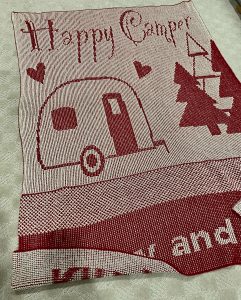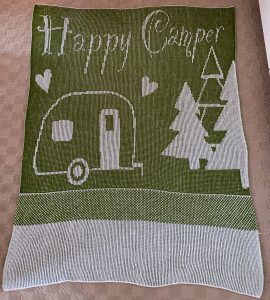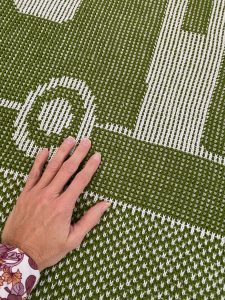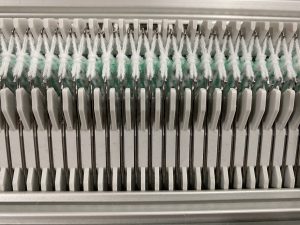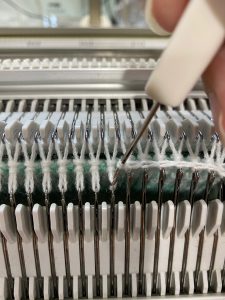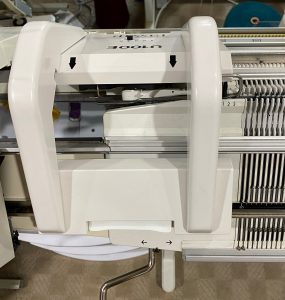Happy Camper Blanket

We often camp with our horses. I designed a “camping theme” blanket for our horse trailer camper. This Passap machine knitted blanket has been very popular with my “camping” clients. I have listed this pattern for fee for anyone who wants to knit some blankets for “happy campers!” This is a 2 color design. The blanket has room on the bottom border to add names or initials. There is room for 2 lines of text if needed. My finished blanket was 64″ wide and 84″ long and knit in one piece on a Passap.
This blanket can be knit on any machine with 200 needles. I knit mine in double bed jacquard on a Passap E6000 T186. This is a large tuck throw with T186. If you want a smaller lap or cot size, knit the same file with T187. It will be smaller and the text will be more defined. This blanket can be knit on any electronic knitting machine with 200 needles. Japanese machines will knit a smaller blanket size. Cast on (#3 for Passap), T186, 88-0-88 total of 176 stitches double bed. Both end needles are on the back bed. 250 pattern rows and 1000 actual lock passes. This was knit with 2 strands 2/24 of each color tension 4.3 on both locks (Passap).
Here is the link to the files.
The “not so fine” print: Do not claim this pattern/digital file as “your” design. Do not share my pattern file or post the digital file online unless it is by sharing the URL link to my website/blog post. You can knit this blanket to sell. Items are knit to sell by small business less than 500 items a year…. I always appreciate sharing of my website name, Herman Hills Farm, when sharing your finished knitted items. …Just hoping others will find some use of my blog/tutorials too. Machine knitting is a dying art. 🙁 Thank you.
